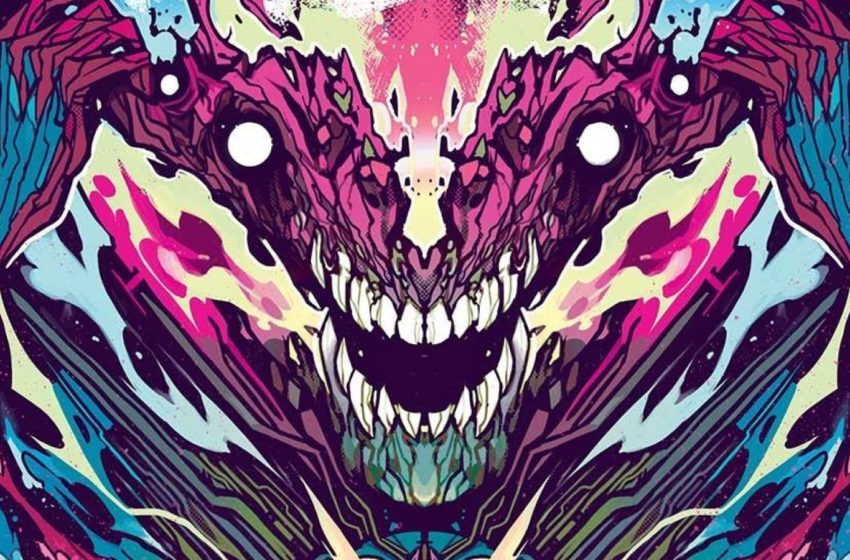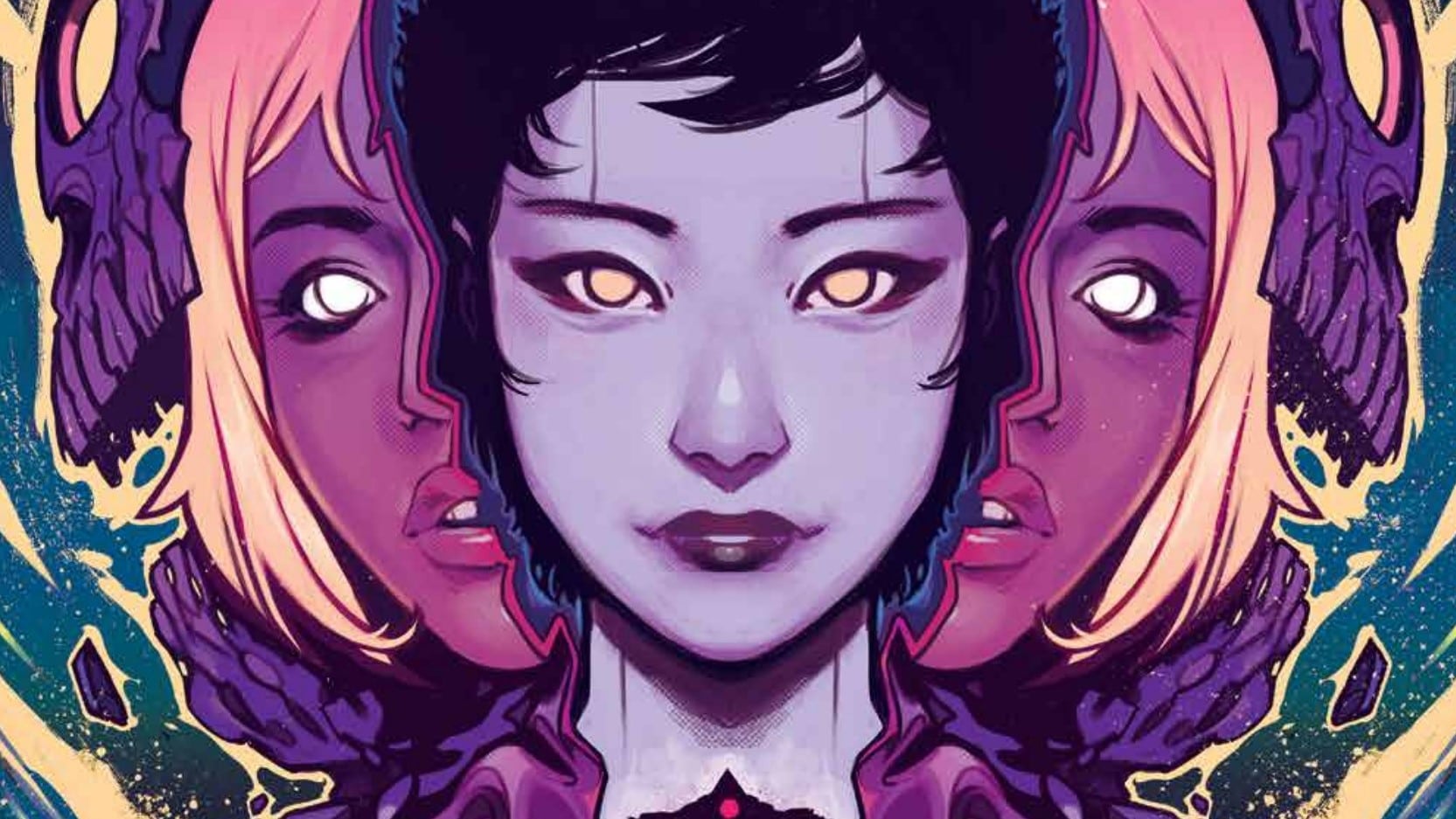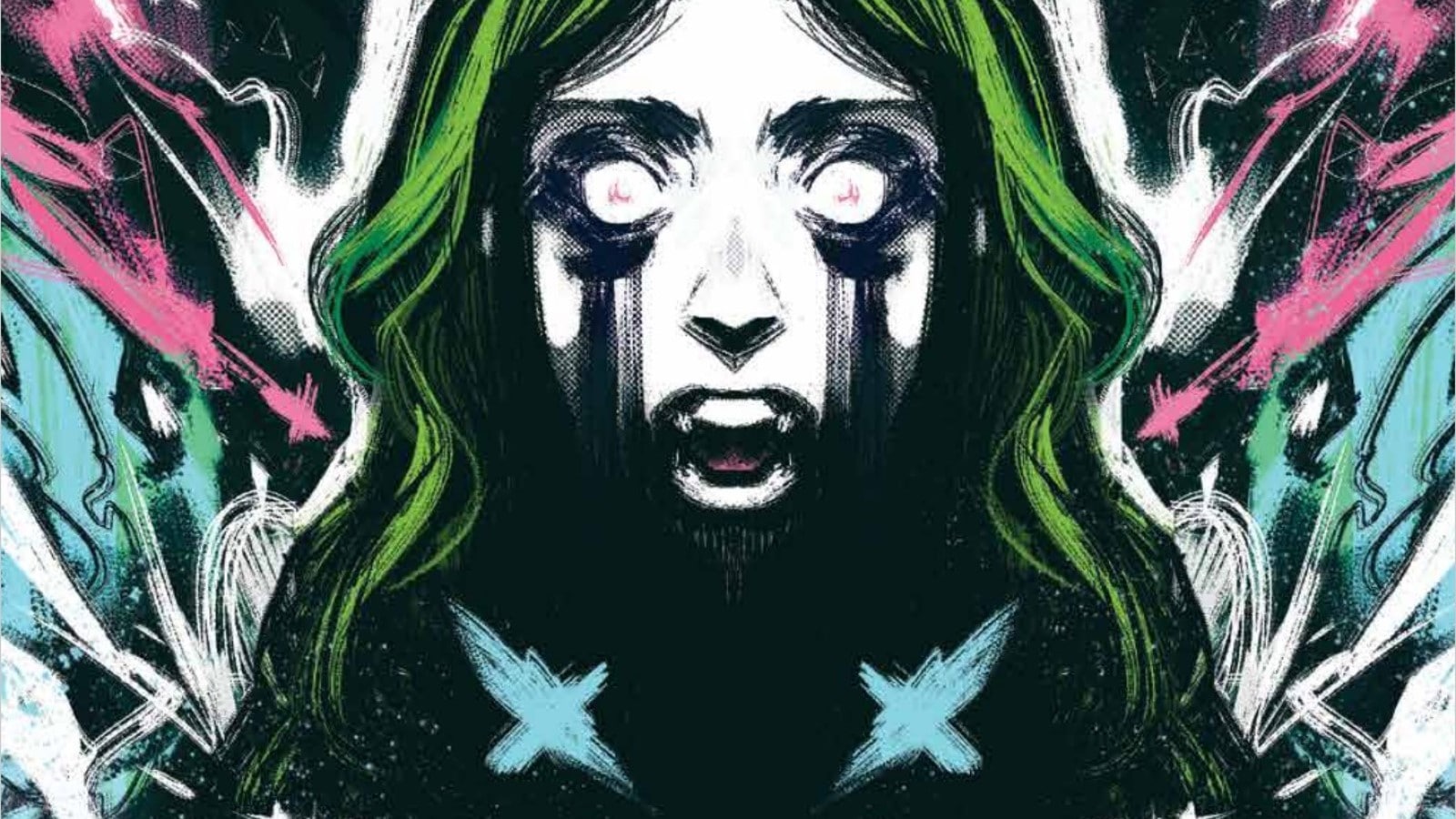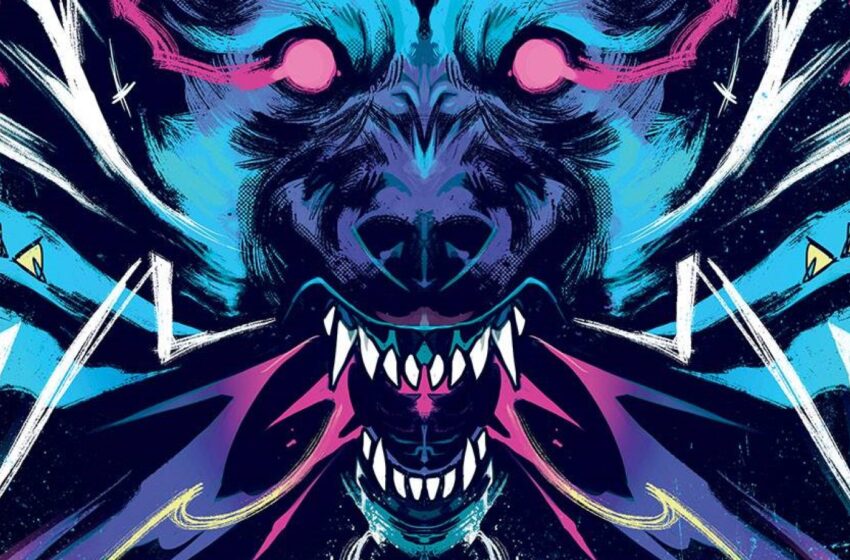It’s the Home Sick Pilots vs. the Nuclear Bastards in a final battle of the bands that could well be the final battle of the bands on the planet. No advance tickets, drink tokens available at the door. The second arc ends in Home Sick Pilots #10, written by Dan Watters, drawn by Caspar Wijngaard, lettered by Aditya Bidikar and designed by Tom Muller for Image Comics.
Dan: Forrest, the ice age is coming, the sun’s zooming in. Engines stop running, the wheat is growing thin. A nuclear era, but I have no fear, ’cause London is drowning and IIIIIIII live by the river. HOOWWWWWLLL!
Forrest: Dan, we’re headed for a Clash.
Dan: Ooh, I think you just named this review!
The Passion of Joe Strummer

Dan: One of my favorite things about this book is when it slows down for a second to dissect the flaws of our punk forefathers. This issue donates two scenes to talking about, first, the differences between the Sex Pistols and the Clash and, later, the social responsibilities of an older Joe Strummer. Forrest, where do you stand on Strummer?
Forrest: Dan, as the resident youth of this column, you’ve put me in a tough spot. My punk “heroes” as it were are a touch more modern than the Clash: Ian MacKaye, Henry Rollins, Laura Jane Grace, AFI (Hell, Hayley Williams) and the like.
Mostly I think of the Clash, and by extension Strummer, as influentially important and informative to the stuff I like both musically and ideologically, but not essential to my own enjoyment of it. Appropriately enough, that’s how I feel about the finer points of Ami and Buzz’s discussion here, if you want to dig into it.
Dan: OK. So Watters uses Strummer as a metaphor to get Ami and Buzz back to the Old James House, in what is effectively a “With great power comes great responsibility” speech.
In the initial conversation, Strummer is framed as “the good punk” vs. the Pistols’ Johnny Rotten, whom Ami and Buzz agree merely put on punk airs and we know in 2021 as a Brexit/Trump supporter. Meanwhile, Buzz says, “I’m sure he gives to charity and shit” of Strummer, who at this point in his career (1994) had been a solo artist for a while, and in fact that year turned down an offer to reunite with the Clash for Lollapalooza.
The first conversation ends with Ami and Buzz considering whether Strummer, and every other aging punk of his cohort, did sell out though, by simple dint of becoming huge rock stars and having the privilege to tune out all the injustices in the world they first sang about — “giving to charity and shit” notwithstanding.
By the second conversation, they seem to have accepted this idea that Strummer abandoned their generation, which leads Ami to the decision to re-bond with the James House to stop the approaching Nuclear Bastard. Which, for the story, is good. Ami is embracing her power and plans to use it, in spite of the consequences, to stop what has become an out-of-control Meg.
BUT, I question why we’re throwing “the good punk” under the bus to do it. Strummer remained a global citizen up to the end of his short life in 2002 (He died of a congenital heart defect). One of his last concerts was a benefit for striking London firefighters.
Is there something to be said for changing how you adhere to the punk ethos as you age? Can you continue to work for it as you also make it work for you, or is it only obvious if you’re still in the pit, getting thrashed around by your brothers and sisters as senescence slowly eats your body from within? Or is it simply a generational thing — Ami and Buzz being too young to understand aging and the ways the world takes its toll on you, and how one inevitably will be forced to put childish things aside? OR am I feeling compelled to cape for a dead man because I, a 41-year-old man, am feeling called out by a couple of fictional teenagers?
OR — and this is where I stop sucking up all the air — is Watters making a weak argument to get us to the issue’s climactic moment?
Forrest: It’s an interesting discussion. If I were to posit anything, it’s that, narratively speaking, Ami and Buzz are almost intentionally missing the point of Strummer’s activism, which is outside of his limited range of physical influence, merely to inspire others — the centrality of any true punk’s ethos (and counterintuitive to the posturing of the Pistols).
The Home Sick Pilots, Ami in particular, think they have to act in the moment in spite of Strummer selling out (I agree with you, Dan, he never did, and was a self-proclaimed socialist until his death), but that undermines the fact that they wouldn’t be having the conversation at all if he hadn’t done something noteworthy first.
By not paying deference to him, they’re doing exactly what he was seeking to empower anyways. There’s a bit of a youthful hardheadedness to that, and also a coy celebration especially on the edge of Meg and Ami’s impending battle threatening to initiate a larger event. In your own words, the circumstances of your adherence change over time. They are the torchbearers of what Strummer can no longer do, and that’s fine, as long as they leave a spark for the next.
Go Go Nuclear Bastard

Dan: Meanwhile, there’s an entirely separate comic happening in the Nuclear Bastard half of this book. It’s part Ghostbusters, part Power Rangers used-sentai footage, but mostly, it’s a kaiju movie.
Specifically it’s the old Godzilla chestnut that nuclear testing will one day birth a monster with the power to destroy us all.
As the Bastard makes its way north toward Seattle, it makes a pit stop in Portland, Oregon, to pick up more ghosts. The narration boxes — A continuation of Meg’s lecture from last issue — indicate these are mostly ghosts of people who died from the side effects of the testing done in the Nevada desert, the various cancers that arose over the years. As it sucks these ghosts into itself like a walking proton pack, the Bastard climbs and swings from tall buildings, damaging them in a way that makes me want to play Rampage for the first time in years.
More than any other event thus far in the series, this would seem to be the thing that lets the general populace know: Ghosts are fucking real, man, and they’re pissed. Forrest, what do you think that means for the future?
Forrest: It’s bad! It would be one thing if we had met some more, uh, likeable ghosts, but we sure haven’t yet.
That’s the thing with letting issues go unresolved for so long, they grow and mutate inside us until they’re much bigger, much scarier things. It’s a nice narrative parallel between what Ami and Meg are grappling with internally and how that manifests on the exterior.
Ami is empowered by smaller, more personal trauma. Each of her ghosts, the house itself, is a representation of a recognizable tragedy — the people you know. She’s grappling with that in her own way as we get back to discussion about what happened to her mom, and her fellow student’s perception of it earlier in the issue.
Meg, however, is a victim of globalized circumstances. The James House took her friends in one fell swoop, and while she’s a figurehead for that, it’s much more abstracted. Appropriately, her ghosts are in the indescribable hundreds or thousands (and that’s not accounting for other American atrocities).
There’s an intentionality in demonstrating that anyone in any circumstance can become a vessel. It manifests differently, but the end result is the same, especially when walking weapons of mass destruction are available for use.
We’re at the precipice here, and things are about to get a lot worse.
Dan: Hot.
Before we move on, I just want to give a shoutout to one of Caspar Wijngaard’s greatest gifts — the cabin tank. First introduced in issue #6, the tank shows up again this issue, transporting Rip and Trish from the System Disrupt base in Nevada to Seattle, like so much … Chekhov’s cabin tank. I don’t know what it does beyond tank stuff, it doesn’t look like a cabin on the inside, but dammit if it isn’t one of my favorable visuals from this comic.
Forrest: Wijngaard is firing on all cylinders issue-wide, really. The first two pages demonstrate a scene-setting gradient of the isolation Ami is feeling: from a crowded street, to the interior of the diner, to a close-up on Ami and Buzz’s discussion and then finally just to Ami, an all white background enveloping her alone. As much as I wish there was a little more of the punk aesthetic infused more directly into the book aside from logo design at times, it’s hard to deny that Wijngaard’s acuteness of scene setting and pacing is anything but masterfully done.
Haha Just Kidding There’s No Big Fight
Dan: The issue builds, inexorably, to a reunion of the comic’s original antagonists, the Home Sick Pilots vs. the Nuclear Bastards. Except now both sides are ghost-powered. A fight feels inevitable. As FOOM FOOM sound effects grow louder, we ask ourselves, who will win, the scrappy, rickety, persistent James House, waiting patiently under the pier all this time for Ami to realize she needs it; or the Nuclear Bastard, by this point an efficient, ghost-collecting terror machine piloted by a young woman motivated by a need to avenge her fallen bandmates.
Except before either beast can draw first ectoplasm, we hard cut to black. Not this time. Not this issue. Not even this arc. According to Watters, arc three won’t start until January, so we’ve got a bit to wait until we see what purports to be an epic fight. Forrest, was this issue just a dirty tease?
Forrest: You ever go to a show and they save their best song for the encore? C’mon. Still feels worth it when you get there, though.
Dan: This is some Sting-grade edging going on right now.
Cool Miscellany, Bro

- I’m in love with Sweeney Boo’s B cover for this issue. Not because it’s an homage to Empire Records, a 1995 movie I don’t have much attachment to, but because it puts Meg front and center, arms outstretched as if to hold back the rest of the cast. The way it should be.
- Dig the use of the book’s trademark black splotch pages to mark the passage of time as the Nuclear Bastard approaches.
- The panel where Old James hisses at Buzz like a cat is hysterical.
- “‘Cos” is one of Watters’ notable British-English affects slipping in. I think most Americans would say “‘cause” or “‘cuz.”
- See also: two American punk kids debating the politics of two British punk bands at length.
- Wijngaard posted a tweet implying that Meg’s name is a play on “megaton.”
- After all this, won’t you give me a smile?







